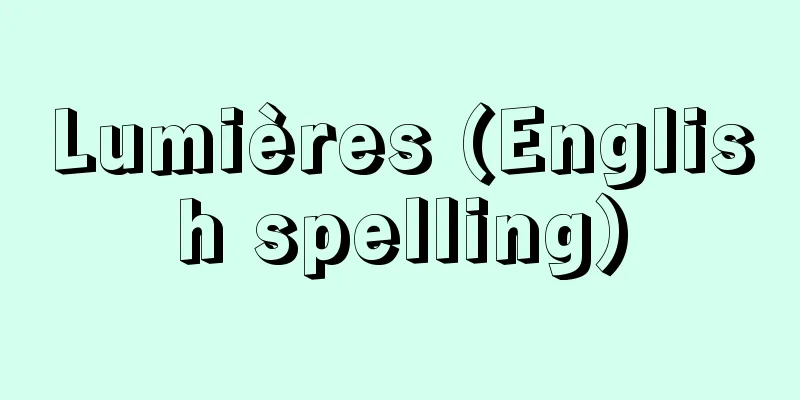Private prosecution - shinkokuzai

|
A crime that cannot be prosecuted without a complaint. A general crime that is not a private offense is called a "non-complaint offense." Generally, crimes are non-complaint offenses, but in cases where the crime is relatively minor, such as negligent injury (Article 209, Paragraph 1 of the Penal Code) or property damage (Article 261 of the Penal Code), or defamation (Article 230 of the Penal Code), where the victim's reputation is violated as a result of prosecution, the system is designed to make a prosecution decision at the will of the person with the right to file a complaint, as described below. A "complaint" is different from a simple declaration of criminal facts (such as a victim report), and is an expression of intent to report the criminal facts to the investigative agency in a certain degree of detail and request prosecution. A person with the right to file a complaint is the victim of a private offense, or a person with a specific relationship to that person, such as the victim's legal representative, spouse, direct relative, or sibling (Criminal Procedure Code, Articles 230 to 234). In principle, a complaint must be filed in writing or orally with a public prosecutor or a judicial police officer within six months of learning about the perpetrator (Articles 235 and 241 of the same law. There is a dispute over filing a complaint by telephone, but case law denies this). If a person is prosecuted (charged) for a private offense without a complaint, the indictment will be dismissed (Article 338, item 4 of the same law). Note that, before the 2017 revision, Article 180 of the Penal Code designated sexual offenses such as rape (Article 177 of the former Penal Code) as private offenses (offenses that cannot be prosecuted without a complaint) in order to respect the victim's wishes and privacy. However, after the revision, the name of the offense was changed to forced sexual intercourse (Article 177 of the current Penal Code), and the provision on private offenses was deleted to avoid interference and retaliation from perpetrators. [Nawa Tetsuro January 19, 2018] [Reference] |Source: Shogakukan Encyclopedia Nipponica About Encyclopedia Nipponica Information | Legend |
|
告訴がなければ公訴を提起することができない罪。親告罪でない一般の犯罪を「非親告罪」という。犯罪は一般に非親告罪であるが、犯罪が比較的軽微な場合、たとえば過失傷害罪(刑法209条1項)や器物損壊罪(同法261条)などや、訴追に伴い被害者の名誉が侵害される名誉毀損(きそん)罪(同法230条)について、後述する告訴権者の意思により訴追判断を行おうとする制度。「告訴」は、単に犯罪事実の申告(被害届など)とは異なり、捜査機関に対し犯罪事実をある程度具体的に申告し、その訴追を求める意思表示である。告訴権者は、親告罪とされる犯罪の被害者や、この者と特定の関係ある者、たとえば被害者の法定代理人や配偶者、直系の親族、兄弟姉妹などである(刑事訴訟法230条~234条)。告訴は、書面または口頭で検察官または司法警察員に対し、原則として、犯人を知った日から6か月以内になす必要がある(同法235条、241条。電話による告訴につき争いがあるが、判例はこれを否定している)。親告罪につき告訴なくして公訴(起訴)された場合には、公訴棄却の判決がなされる(同法338条4号)。なお、強姦(ごうかん)罪(旧刑法177条)などの性犯罪は、2017年(平成29)の改正前の刑法第180条では、被害者の意思やプライバシーを尊重して、親告罪(告訴がなければ公訴を提起することができない罪)とされていたが、改正後は、罪名が強制性交等罪(現行刑法177条)などになるとともに、加害者等からの干渉や報復を回避するため、親告罪の規定が削除され非親告罪となった。 [名和鐵郎 2018年1月19日] [参照項目] |出典 小学館 日本大百科全書(ニッポニカ)日本大百科全書(ニッポニカ)について 情報 | 凡例 |
<<: New International Economic Order
Recommend
Variety show - Yose
A small permanent entertainment hall where rakugo...
Blue Stockings
The Bluestocking Society is translated as "Se...
African art - African art (English spelling)
Art of the African continent. Excludes Egyptian ar...
Arisaema aequinoctiale (English spelling)
… [Mitsuru Hotta]... *Some of the terminology tha...
Russula emetica (Russula emetica)
Basidiomycetes, order Matsutake, family Russulacea...
Brassica nigra (English spelling)
… [Mitsuru Hotta]... From [Mustard (mustard green...
Galenic wax - Galenic wax
…Generally, there are two types of cream: cold cr...
Momoyama [town] - Momoyama
Kinokawa is an old town in the Naka district in no...
Independent Labour Party
A British political party. Abbreviated as ILP. It...
Turicum
…A town that developed on either side of the Limm...
Substitute Prison - Daiyoukankoku
A police detention center used in place of a priso...
Ledridae
…In Japan, it is found south of Honshu, and abroa...
Dyer, H.
...In other words, the Meiji government put effor...
Iroha Tea House - Iroha Jaya
A title for Kabuki and Joruri. Premiere Genroku 11...
Jack Frost
... First of all, monsters were created as strang...









